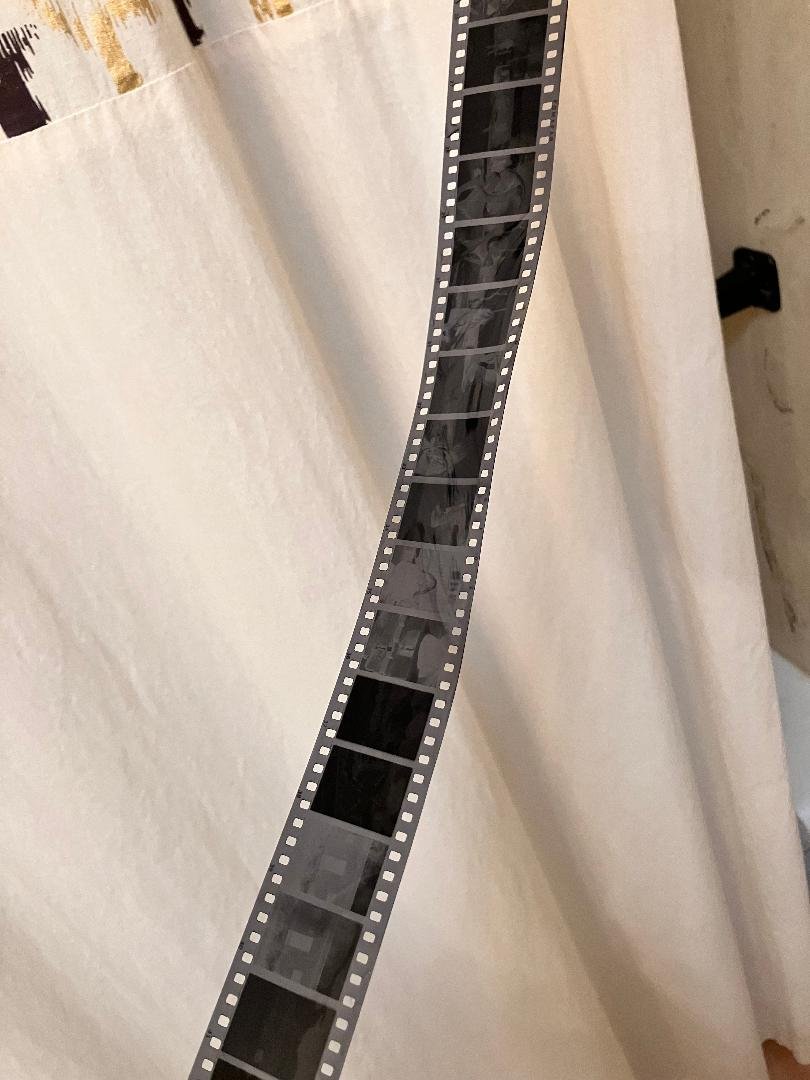The other day I took out my Pen F and shot a roll of 24….knowing that I would get more like 48 shots from it. I played with it, I worked it….I experimented with it. I shot 1.4 in broad daylight without a ND filter….I shot F16 on a cloudy day, I used a combination of shutter speeds accordingly etc…. The point was I wanted to see how shutter worked, F etc on my Pen F….as well as a new Zuiko 85mm equivalent lens I picked up from a Japan camera store as I compared it to the 38mm lens on the camera.
All told….I was pleased. As you can see by the negatives below, the images are vertical and not horizontal (although you can still shoot horizontally). And more importantly, they ‘came out’ :-) …. I was a bit worried since when I rewound the film it had an odd feel to it like I didn’t take many images. Not sure why, but that had me worried, so seeing the results below had me jump up and down.
It is important when experimenting with a camera, lens, situations….that journaling comes into your focus and this becomes a natural process to you. Journalling, especially when working on a project, adds a written history to your images. It helps, let alone it is fun…..to return to your journal after completion of a project and re-read what occurred. Journalling becomes the frosting on the cake, with the birthday candle stuck to it. After every single press of the shutter, I would immediately write down my settings, so when I started to review my negatives, I could see the settings for each negative. Sometimes I used two settings for each half frame set of images. I learn from my mistakes and put the time in ‘during the process’, to do just that. A portion of my journal is below.
So, that brings me to the end result…or what did I take away. With film, it is important to expose for the shadows so in some cases within my experimentation I over-exposed several stops. The importance of this stood out within my images. It was easy to casually view a negative without perusing my notes and be able to determine this. The Second thing I learned? The wide open lens on the Pen F (38mm) or….. (53mm equivalent) is sharper than the 60mm (85mm equivalent). One reason why I picked up the longer lens was I am going to be getting close to people and at the same time take multiple shots of them. The Pen F has a problem. It has a very loud shutter….which would even alert a bent old lady with two hearing aides that something was amiss. .So the 85 equivalent promised me the ability to shoot somewhat of a close shot, but at a distance, far far far away from the noise of the Pen F shutter. And not to be forgotten, since this project will be done in downtown Philadelphia, the noises of the city will help.
The shots below show some of my results. You can see the first paired shots, which were with the 60 (85)mm…are just a bit fuzzy. With a half-frame, you are bound to get more fuzziness regardless of lens, simply due to the size of the frame (half frame), but in the images below, it is noticeable . I also shoot using Fomapan which is not nearly as refined as TriX or Ilford 5p.
The second set of connected images is also done with the 60 (85), but the light was more exposed in this image from both frames. Notice though the difference in exposure between left and right images, as the angle was opposite.
The third pairing of images was done with the 38mm lens (53 Equivelent) and I believe is sharper …..It just goes to show you how much you can learn if you elect to burn a roll of film or two. I am not done learning my Pen F.! But I am willing to put the time in for a project in which I will be using the diptych technique…. Take care all…




